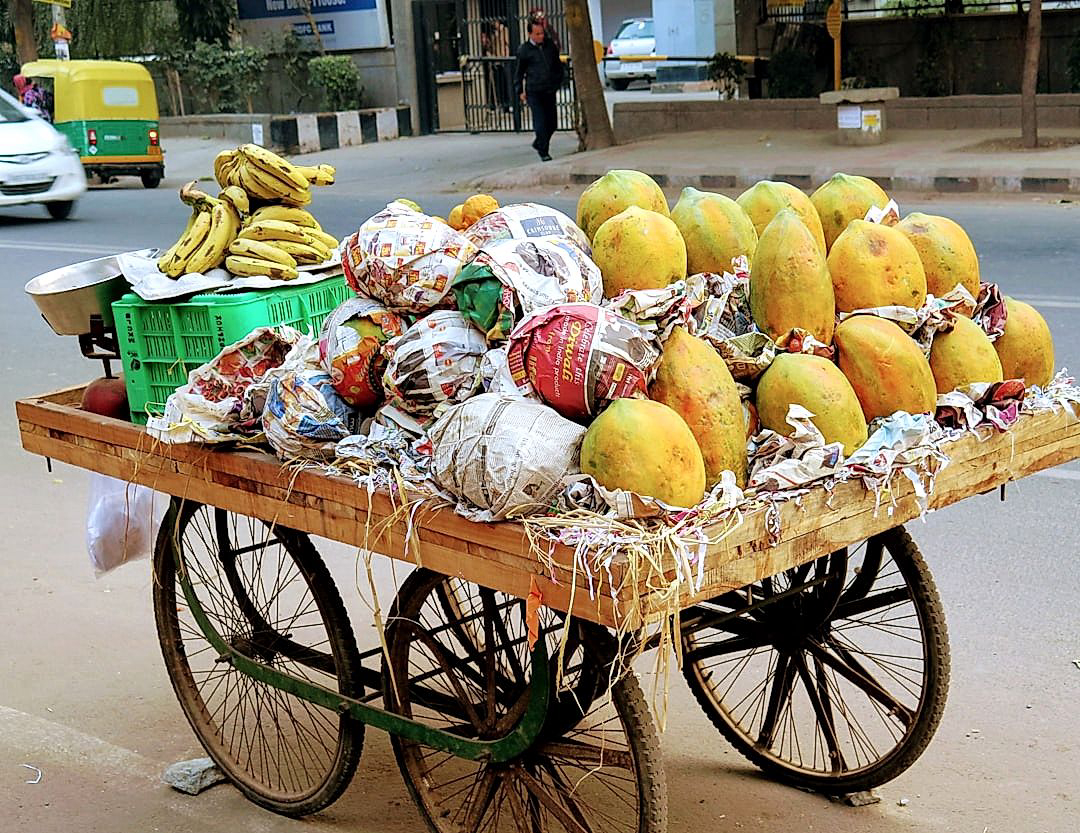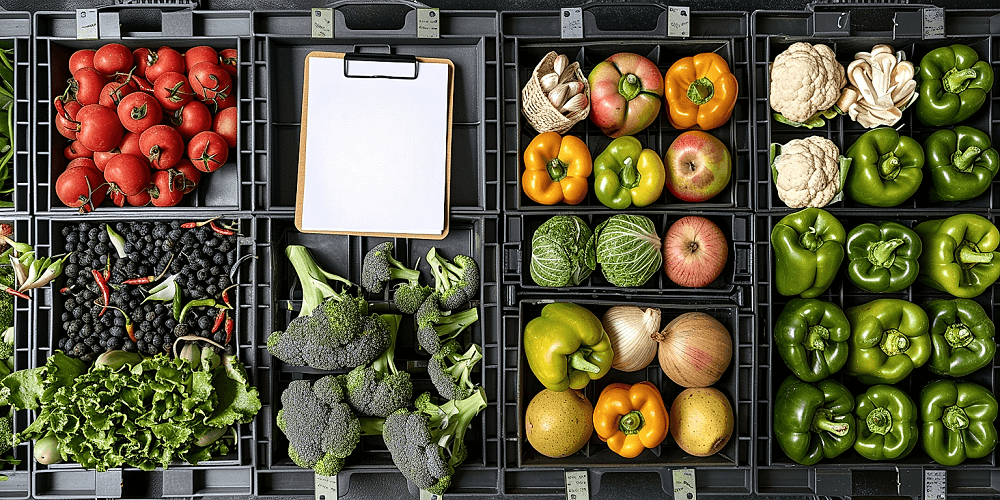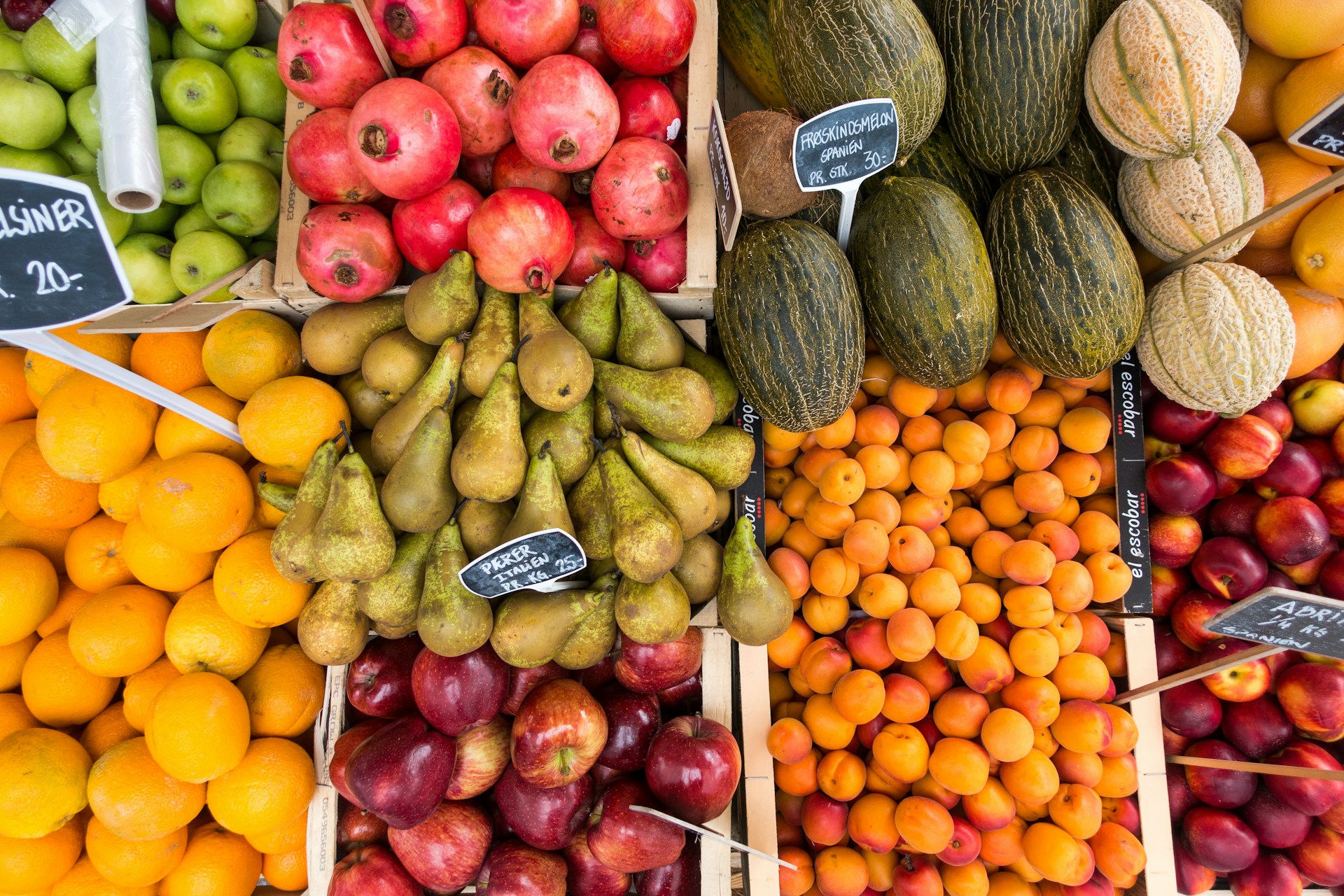The complexities of modern supply chains can create significant challenges for businesses distributing fresh produce.
Regulatory compliance, a critical facet of this process, often proves the most taxing.
As emerging technologies and shifting legislation continually redefine the landscape, navigating these changes becomes imperative.
It’s essential to ensure food safety, mitigate risks, and promote overall business success.
This article aims to shed light on several compliance steps vital for effective produce distribution.
By delving into these aspects, you’ll be better equipped to streamline your operations, bolster productivity, and sustain profitability in your distribution processes.
Contents
- Compliance Steps For Produce Distribution Success
- 1. Obtain necessary licensing for food distribution.
- 2. Follow Good Agricultural Practices (GAPs)
- 3. Implement Food Safety Management Systems
- 4. Maintain Proper Sanitation during Distribution
- 5. Ensure Temperature Control during Transportation
- 6. Follow Traceability and Recall Protocols.
- 7. Engage Consistent Audits and Inspections
- The Bottom Line
Compliance Steps For Produce Distribution Success
1. Obtain necessary licensing for food distribution.
The first step towards achieving successful produce distribution compliance is to obtain the necessary licensing for food distribution.
Various regulatory bodies issue these permits as an assurance of safety and quality in the food being distributed.
Like any other business industry, the food distribution sector requires a specific license to guarantee legal operation.
This crucial legal document acts as a form of certification that the enterprise is recognized by the state, compliant with all food safety regulations and has a legitimate interest in the distribution of food products.
Every potential distributor must understand that this license is non-negotiable and plays a significant role in the establishment of the business.
The types of licenses required may vary depending on the area of distribution.
For instance, some areas may mandate a general business license, while others may need a special food dealer’s permit.
The licensing process also ensures that the distributor is compliant with local health and safety regulations. A food dealer’s permit, in particular, shows compliance with certain sanitary conditions.
Obtaining the necessary licenses is not just a bureaucratic step but a means to ensure consumer protection and public health.
It shows the distributor’s commitment to practicing a high level of hygiene and sanitation, which is fundamental in food handling and distribution.
Without a license, a distributor risks facing serious legal repercussions that can lead to business closure.
Besides the legal aspects, having a license can increase a business’s credibility in the eyes of customers and stakeholders.
Customers are likely to trust and prefer licensed distributors who are perceived to be more professional and reliable.
Moreover, stakeholders such as suppliers and financial partners may view licensed businesses as less risky and more attractive for investment.
Acquiring a license is not only necessary for regulatory compliance, but it also acts as proof of accountability and professionalism.
For continuous success, food distributors must ensure their licenses stay up-to-date and are renewed on time.
This continuous process contributes to your business’s growth and ensures you are always in compliance with food distribution regulations.
Overall, obtaining necessary licensing for food distribution is a critical step in establishing a successful and compliant produce distribution business.
2. Follow Good Agricultural Practices (GAPs)
Good Agricultural Practices (GAPs) are crucial elements in the success of produce distribution.
They involve a plethora of practices and procedures that ensure the quality and safety of the produce right from cultivation to distribution.
Hence, all produce distribution companies must strictly follow GAPs to maintain compliance.
Understanding and implementing Good Agricultural Practices ensures the production and distribution of safe and high-quality fresh produce.
These practices guide farmers on reducing risks of on-farm contamination from harmful elements and ensuring the wholesome nature of the harvested produce.
These risks may involve the usage of agrochemicals, irrigation methods, and post-harvest handling practices.
Every distributor should be conversant about these practices as they critically determine the safety and quality of the distributed produce.
For instance, GAPs govern how farmers should carefully handle fertilizers, pesticides, and other agrochemicals to prevent crop contamination.
They also recommend practices on how to manage soil and water quality efficiently for optimal crop growth.
On-produce safety is further maintained through GAPs guidelines on timely crop harvesting and the post-harvest washing and packing of the produce.
All produce distributors, therefore, need to understand how these practices influence crop health and safety for better compliance and distribution success.
Each component of GAPs plays a vital role in the end product that reaches the consumer’s table and, thus, directly impacts the credibility of the distributor.
Therefore, adhering to GAPs is not just about compliance, but also about ensuring the trust and loyalty of consumers.
It is crucial for all produce distributors to engrain GAPs in their operational policies and consistently review them to ensure all aspects are addressed.
Ongoing training and communication about these practices with all stakeholders involved further ensure that they are duly implemented and followed.
Observing these practices not only affects produce quality and safety, but it also significantly enhances the productivity and sustainability of farms.
In conclusion, every diligent and successful produce distributor understands that following Good Agricultural Practices is not a mere regulatory process, but a commitment to offering wholesome and safe produce to consumers.
3. Implement Food Safety Management Systems
Implementing Food Safety Management Systems (FSMS) is a vital step in achieving success in produce distribution.
These systems provide a systematic approach to controlling food safety hazards within a food distribution chain.
With an effective FSMS, an organization will be able to assure that the food being distributed is safe to eat and meets both customer and statutory requirements.
Several models are available for FSMS, including the Hazard Analysis Critical Control Points (HACCP), the ISO 22000, and the Safe Quality Food (SQF).
Each of these systems has its unique features but generally consists of the same core elements.
An important aspect of a FSMS is risk assessment and management which includes the identification, evaluation, and control of food safety hazards.
Systems like HACCP focus on critical control points (CCPs) where hazards can occur and eliminates or reduces them to acceptable levels.
The ISO 22000 standard is an internationally recognized standard that combines the key elements of HACCP and the ISO 9001 quality management system.
The SQF program is a comprehensive system that emphasizes food quality in addition to food safety.
Determining which FSMS to implement depends on the specific needs, goals, and regulatory compliance requirements of your organization.
For effective implementation, training is required on the chosen FSMS.
Both in-house staff and third-party auditors should be adequately trained to understand, implement, and maintain the system effectively.
Implementation of a FSMS requires continuous review and improvement.
The system should be flexible enough to adapt to changes in regulatory requirements, customer demands, and other external and internal factors.
It is essential to document all processes and procedures involved in your FSMS.
Proper documentation provides evidence of compliance and helps to ensure consistency in operations.
4. Maintain Proper Sanitation during Distribution
As part of achieving compliance for successful produce distribution, it’s key to maintain proper sanitation during all stages of the distribution process.
Many factors can contribute to foodborne illnesses, but one of the main culprits is often poor sanitation practices within the supply chain.
Regular cleaning of vehicles, containers, harvesting tools, and other equipment is vital to ensure that no contaminants or pathogens come into contact with the produce.
Employees handling the produce must be trained in proper hygiene practices and should be aware of the crucial role they play in maintaining food safety.
Furthermore, it’s important to implement safe handling practices for the produce to reduce the chances of contamination during transportation or storage.
One effective strategy to implement is the use of sanitation standard operating procedures (SSOPs), which are written procedures detailing how sanitation tasks should be carried out.
These guidelines ensure there’s a standardized method of cleaning and sanitizing all equipment and facilities, thus reducing the risk of cross-contamination between batches of produce.
As part of achieving compliance for successful produce distribution, it’s key to maintain proper sanitation during all stages of the distribution process.
Through proper sanitation, not only does the risk of contamination lower, but the shelf life of the produce can also be improved, thereby reducing waste and increasing profit margins.
Additionally, maintaining sanitation comes with the added benefit of building trust with consumers, which increases customer loyalty and enhances the company’s reputation in the market.
On the contrary, a failure to maintain proper sanitation during distribution can lead to severe consequences, including product recalls, penalties, or even legal action against the company.
Therefore, it’s imperative that companies in the produce distribution industry invest sufficient resources into the maintenance of outstanding sanitation practices.
Yes, it might require additional time, training, and costs, but the long-term benefits of implementing such practices far outweigh the potential problems that can arise from poor sanitation.
Moreover, it’s crucial to adapt and improve the sanitation practices as the company grows, and the distribution gets more complex.
To ensure that the sanitation practices are effective, performing regular sanitation audits is a good practice. These audits can identify any areas of concern that need improvement and ensure compliance with all applicable regulations.
.In summary, maintaining proper sanitation during distribution is non-negotiable for any produce distributor who aims to achieve success in the long-term.
5. Ensure Temperature Control during Transportation
Temperature control is a critical factor in maintaining the quality and safety of produce during the distribution process.
It’s essential to understand that different types of produce may require different temperature settings for optimal preservation.
Transport vehicles need to be equipped with reliable temperature control systems to ensure that the produce stays fresh.
These systems should be regularly maintained and calibrated to ensure their accuracy and effectiveness.
Monitoring the temperature during transportation minimizes the risk of foodborne illnesses that are often linked to improper handling and temperature control.
Using a temperature monitoring device can provide a detailed record of the temperature throughout the journey, giving you proof of your compliance with safety regulations.
Most monitoring devices can provide real-time updates on temperature changes, allowing immediate intervention if necessary.
However, having a temperature control system in place is not enough, appropriate training for drivers and handlers on its use is a must.
They should understand the importance of temperature control, know how to properly operate the systems, and react to temperature deviations appropriately.
There are also regulatory requirements to consider, such as the Food Safety Modernization Act (FSMA), which has specific rules about temperature control during transport.
Failure to comply with these regulations can result in serious penalties, including fines and suspension of operating licenses.
Remember, the goal is not just compliance, but also maintaining the best quality of your products throughout the distribution process.
Ensuring suitable temperature control helps in reducing food waste, thus enabling you to contribute to environmental sustainability.
Lastly, temperature control also helps preserve the taste, texture, and nutritional value of the produce, leading to improved customer satisfaction and loyalty.
Overall, emphasis on temperature control during transportation is an essential step among compliance measures in the successful distribution of produce.
6. Follow Traceability and Recall Protocols.
The importance of following traceability and recall protocols in the produce distribution industry cannot be undermined.
These protocols are core components of a comprehensive food safety management system.
Traceability enables the identification of food products’ origination, thus assisting in pinpointing potential sources of contamination and tackling foodborne illnesses.
In addition, traceability protocols allow for the accurate tracking and tracing of produce from the field to the consumer’s plate.
Recall protocols, on the other hand, provide distributors with procedures that come into play when food safety hazards are detected, ensuring that harmful products are promptly removed from the market and consumer exposure is minimized.
The initiation of a recall can damage a company’s reputation, but if done correctly and promptly, it can also showcase the company’s dedication to maintaining a high degree of food safety.
The foundation of an effective traceability system lies within accurate record-keeping and the implementation of technology solutions like barcoding and Radio Frequency Identification (RFID) to track produce in real time.
When setting up traceability and recall procedures, companies should ensure a seamless flow of relevant information within the supply chain from growers, packers, and suppliers to retailers.
The information, including product identification, batch numbers, production data and shipment information, must be captured and readily retrievable for successful traceability.
Given that recalls are often unexpected, companies should also invest time and resources in conducting mock recall testing on a regular basis.
Having a recall team, with clear roles and responsibilities, is essential to ensure timely, coordinated actions during real-life recalls.
Adequate training of this team in recall procedures is crucial to ensure swift product removal and inform stakeholders effectively.
A successful recall also requires the manufacturer to send clear, specific information to regulators, customers, and sometimes the public, outlining the problem and the steps taken to address it.
In conclusion, following traceability and recall protocols not only helps to comply with regulatory requirements and industry standards but also fosters consumer confidence, a key factor in driving the success of any food distribution company.
Therefore, these protocols play pivotal roles in the path to achieving produce distribution success.
7. Engage Consistent Audits and Inspections
With ever-changing food safety standards and regulation, it is essential for produce distributors to engage in consistent audits and inspections.
Regular audits and inspections are crucial to ensure that food safety systems are working optimally.
They can help identify and address areas of non-compliance before they become a major food safety issue.
Regular audits and inspections are not just crucial for compliance, but they also contribute to the overall success of a produce distribution company.
Audits can either be internal, conducted by staff within the organization, or external, carried out by third-party auditors.
Regardless, the goal is the same – to ensure the company’s compliance with food safety regulations and guidelines are up to par.
It is important that the selection of external auditors is done with care, they must be knowledgeable and experienced in the specifics of fresh produce distribution.
A thorough inspection includes a careful review of sanitation procedures, temperature control measures, food safety management systems, and even the suitability of the transportation facilities.
If any issues are discovered during the audit, they should be thoroughly documented and promptly addressed.
Addressing these issues often involves making changes to procedures, investing in new equipment, or providing additional training for staff.
After making the necessary changes, a follow-up audit should be conducted to ensure that the changes are effective in ensuring compliance.
Furthermore, maintaining a detailed record of all audits and inspections is not only necessary for regulatory purposes but also useful for tracking improvements and identifying potential areas of concern in the future.
It is also paramount to communicate the results of audits and inspections to all relevant staff.
Through this way, everyone is informed of their role in maintaining compliance and the significance food safety plays in the success of the company.
Regular audits and inspections are not optional, they are an integral part of the continuous process of ensuring compliance and overall success in produce distribution.
The Bottom Line
Through the rigorous practice of obtaining necessary licensing, adhering to good agricultural practices, implementing robust food safety management systems, upholding clean sanitation principles during distribution, ensuring temperature control during transportation, following stringent traceability and recall protocols, and engaging in regular audits and inspections, the quality and safety of distributed food items can be effectively upheld.
These practices and regulations not only help to mitigate potential food hazards, but also remain significant markers of a reliable and accountable food supply chain.
Despite the complexities and challenges they may impose on the logistics of food distribution, these steps are fundamental to ensure public health and wellness.
Ultimately, these principles serve to build a resilient, safe, and efficient food industry.




